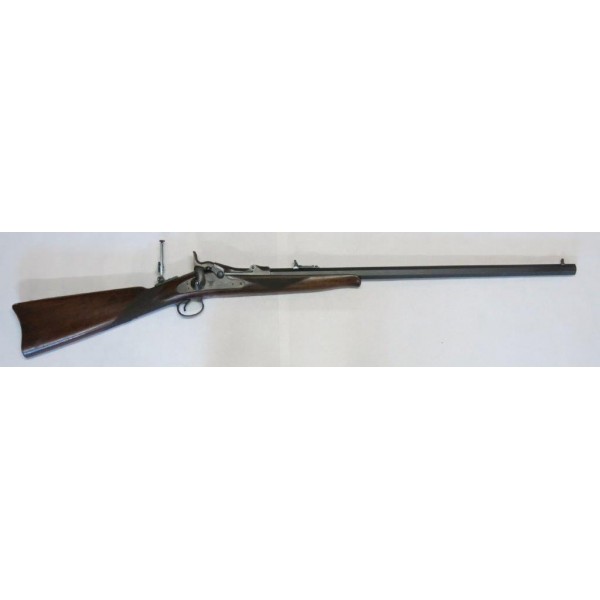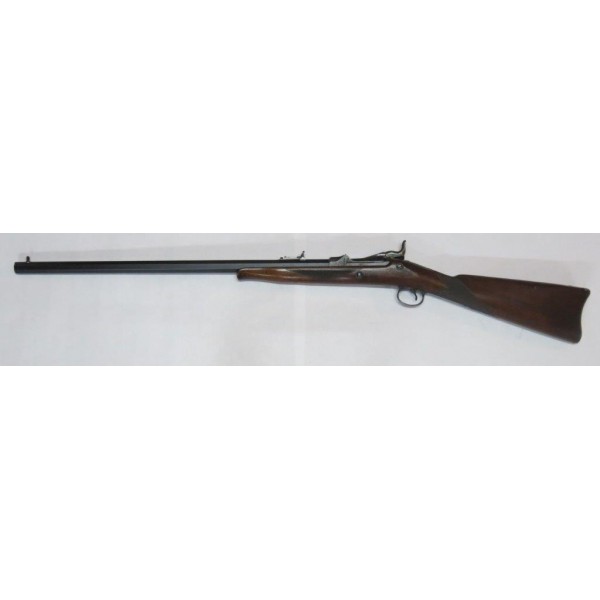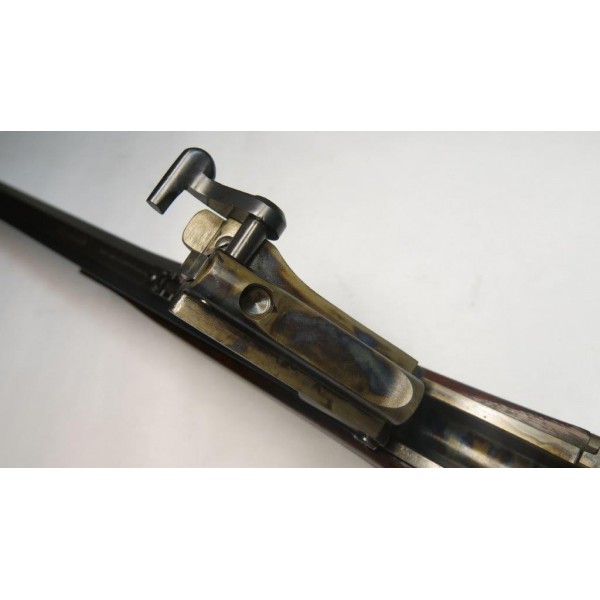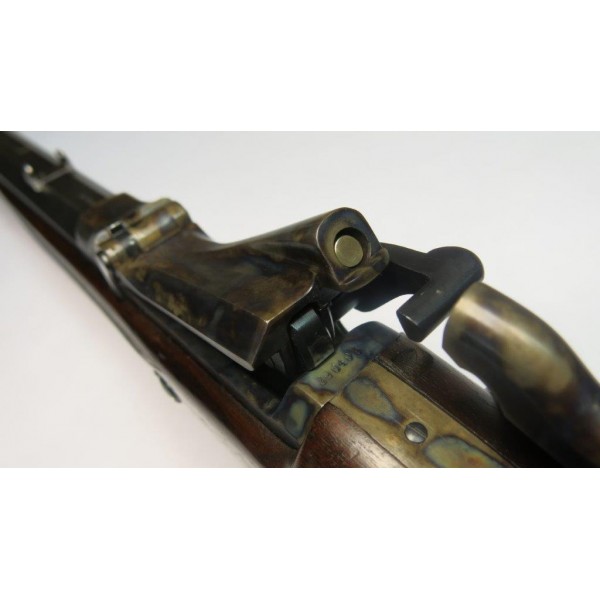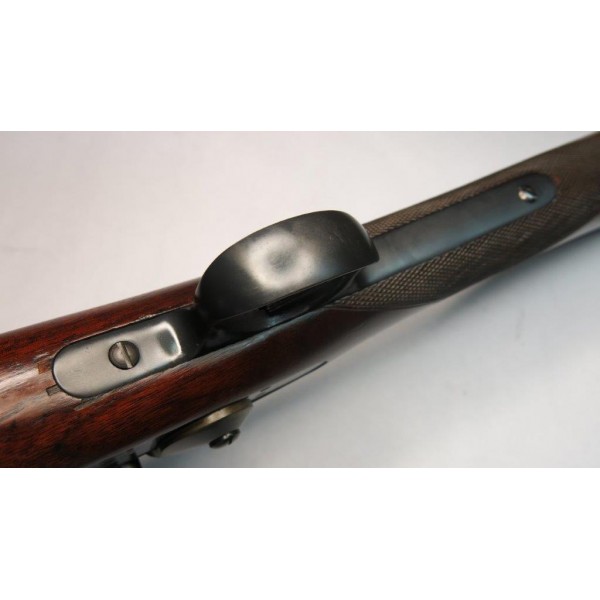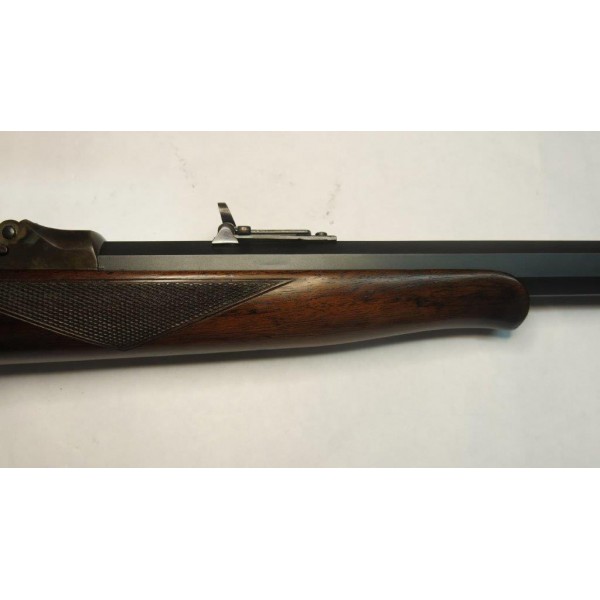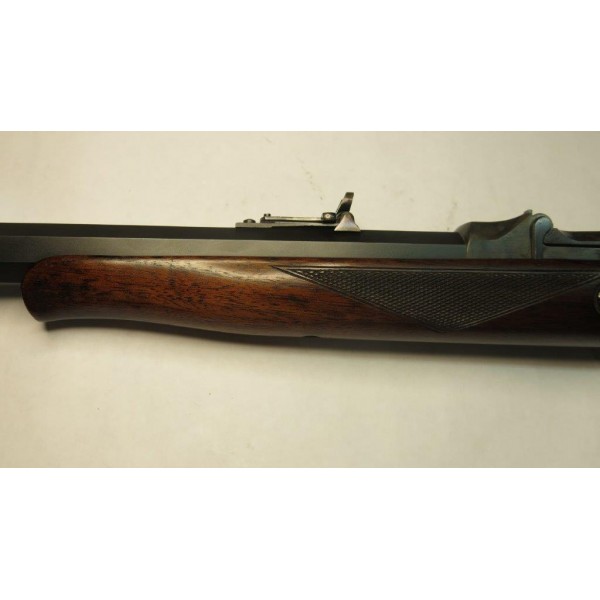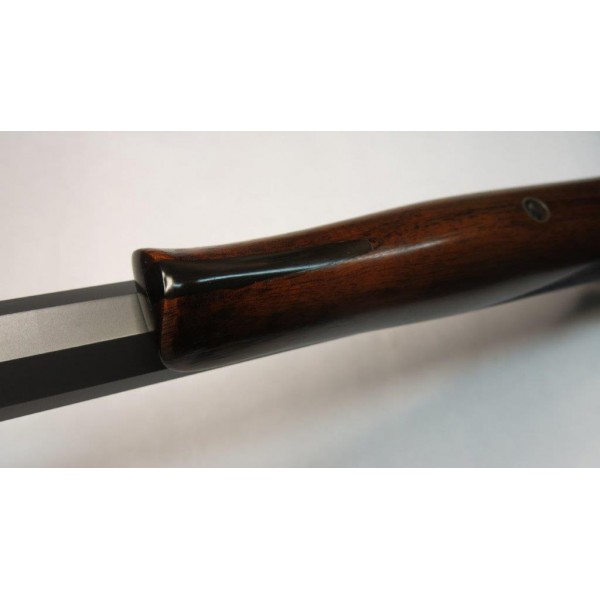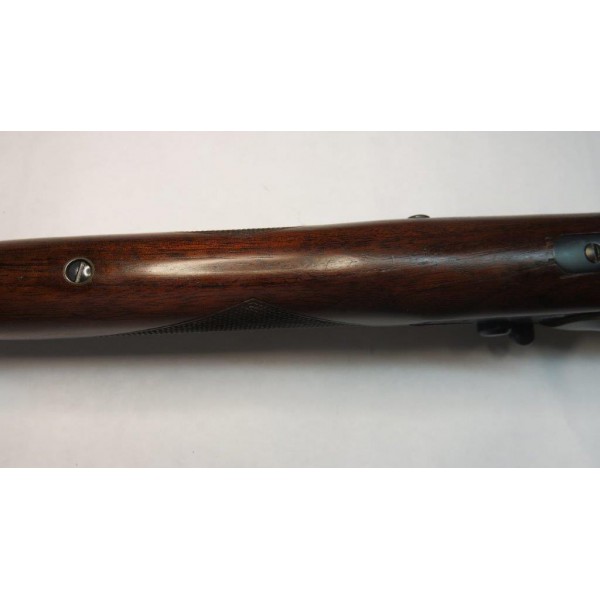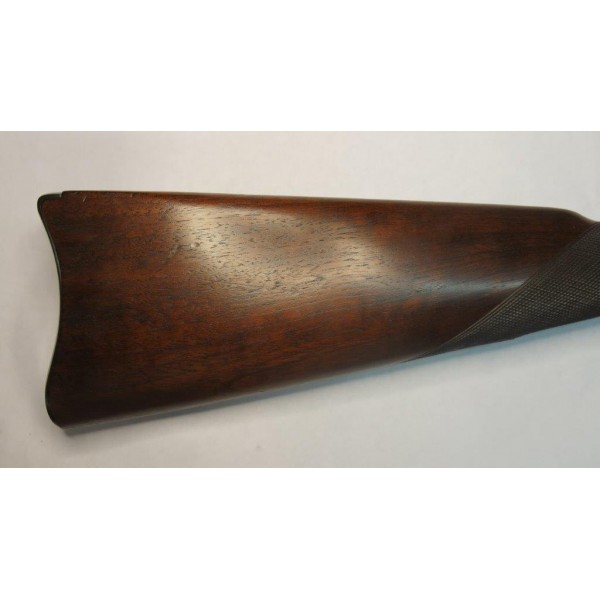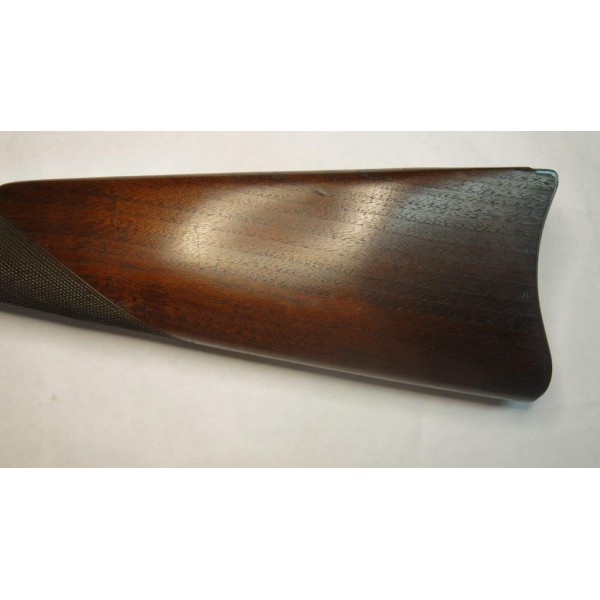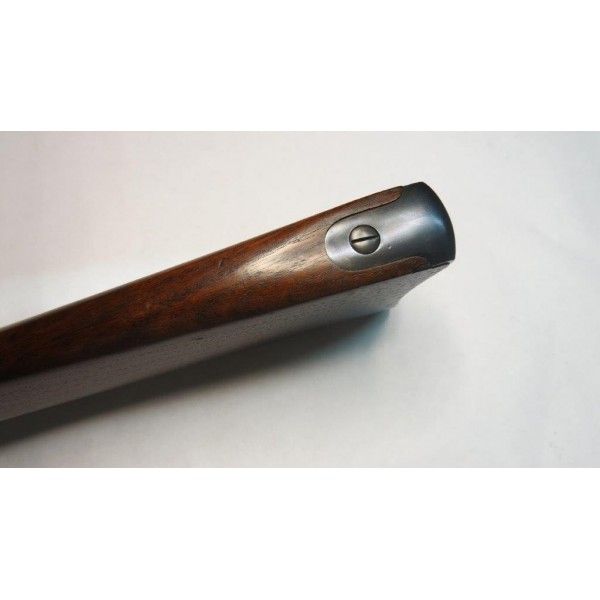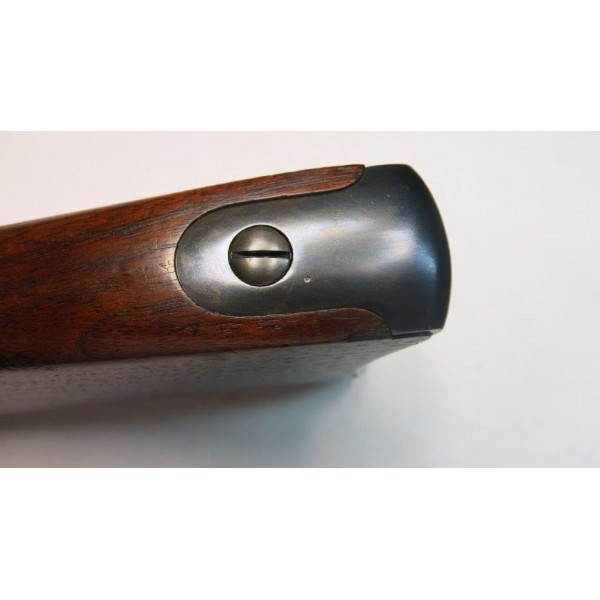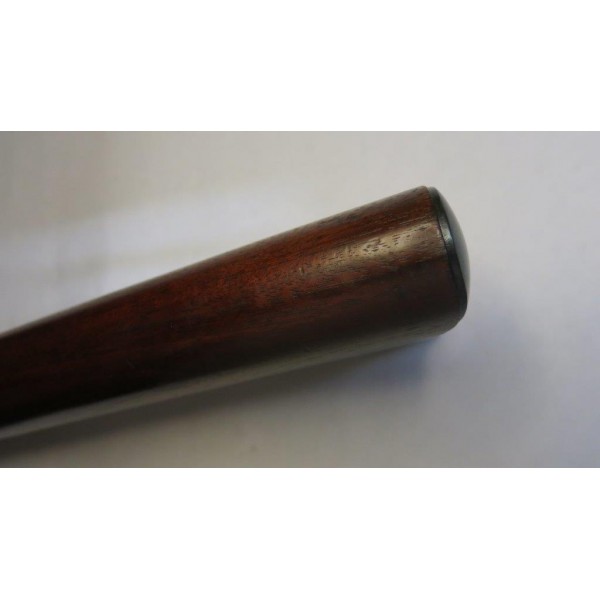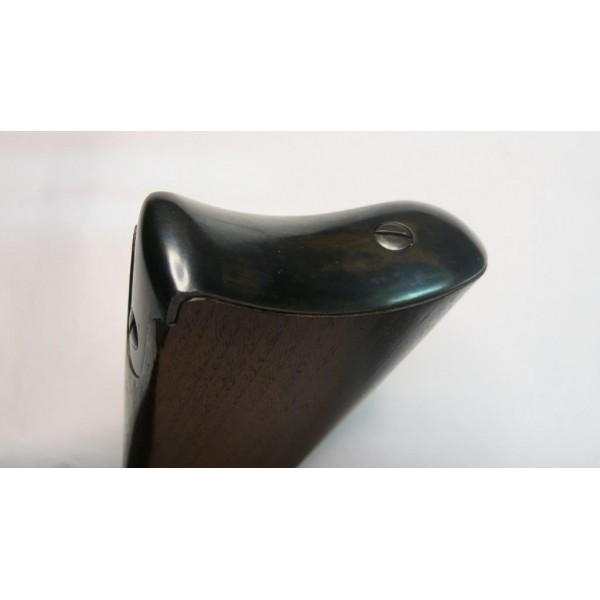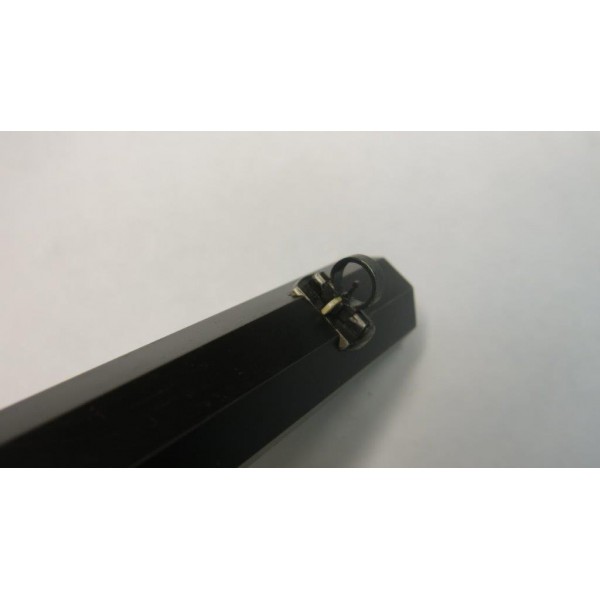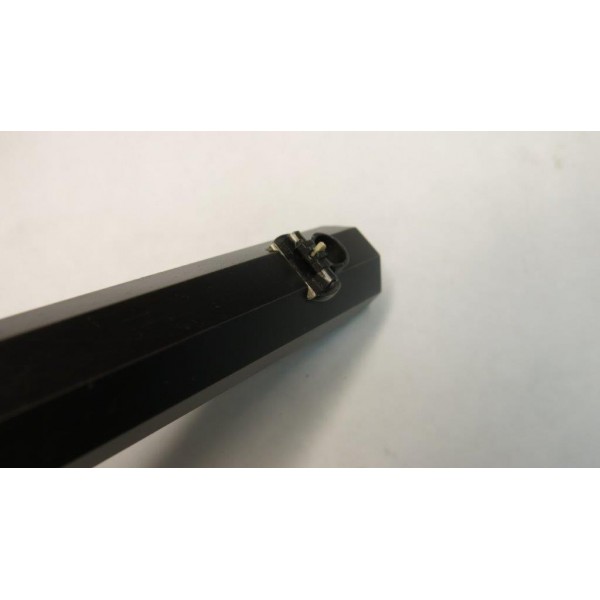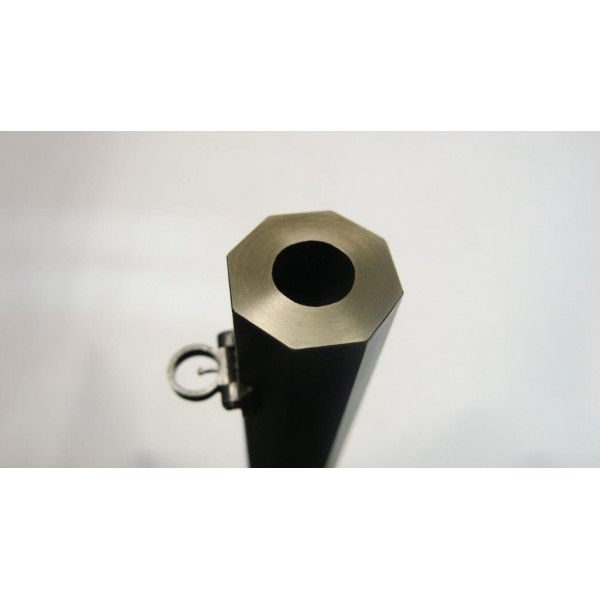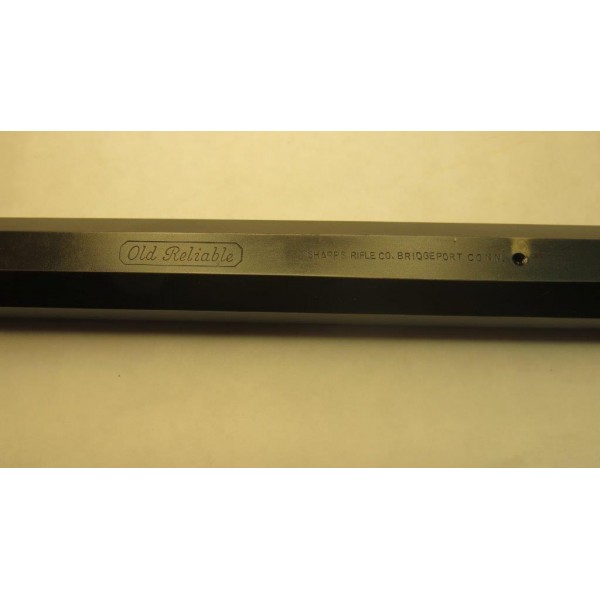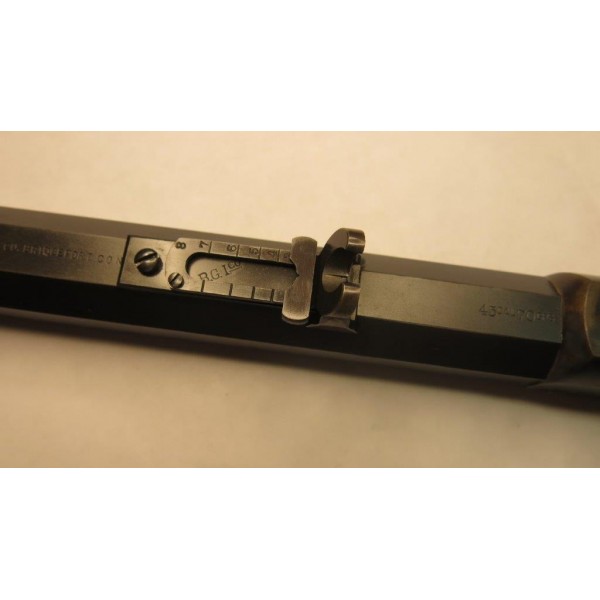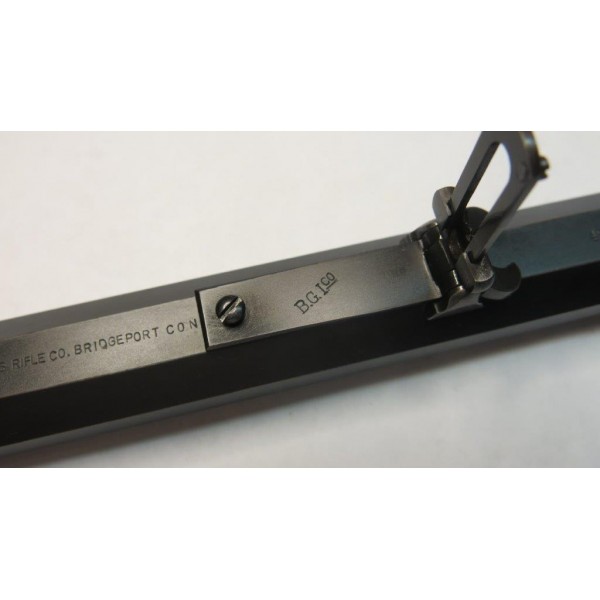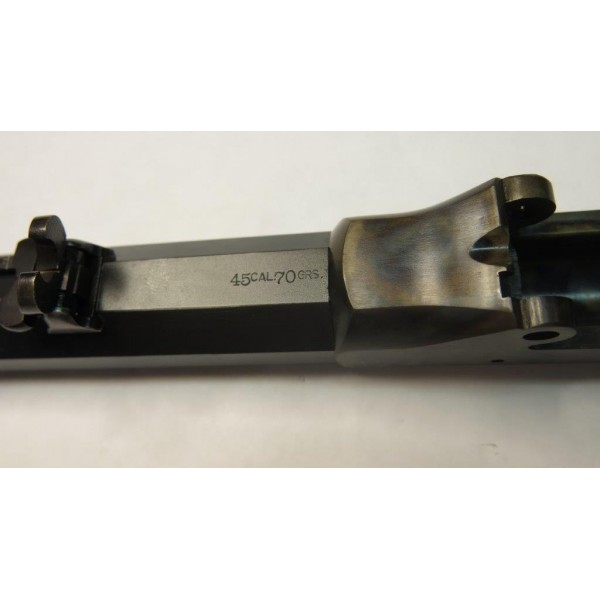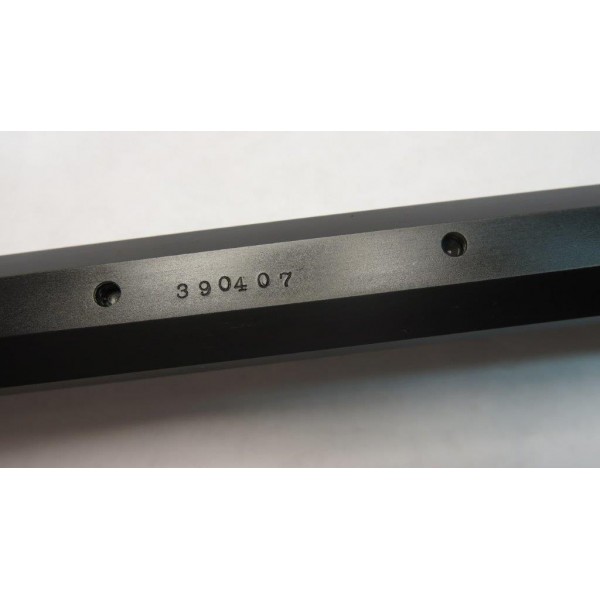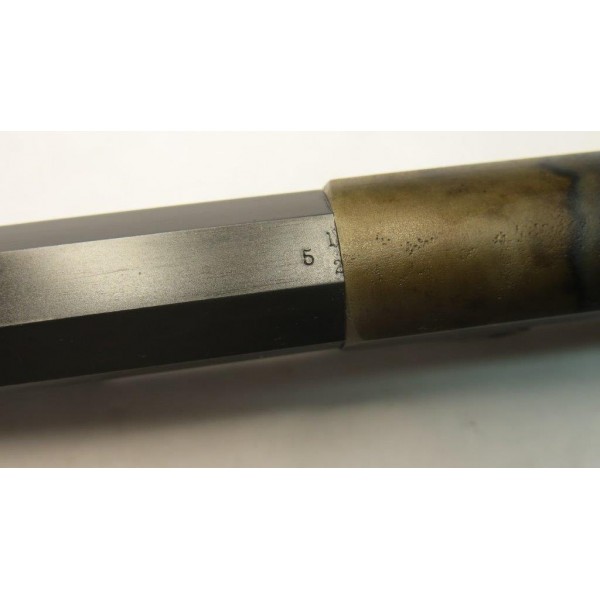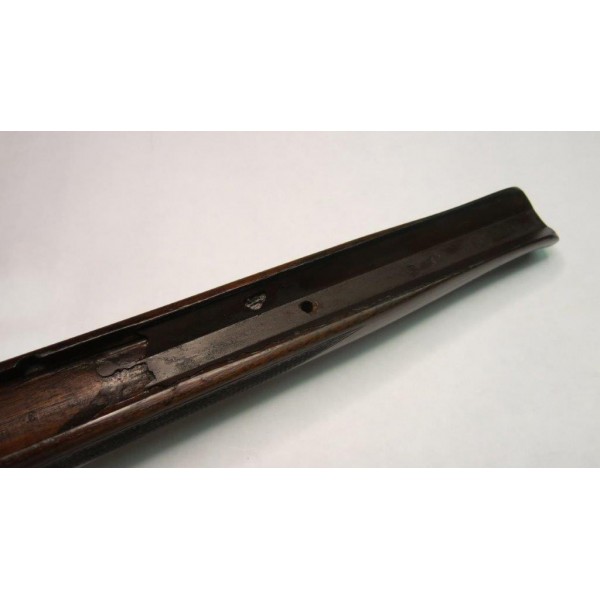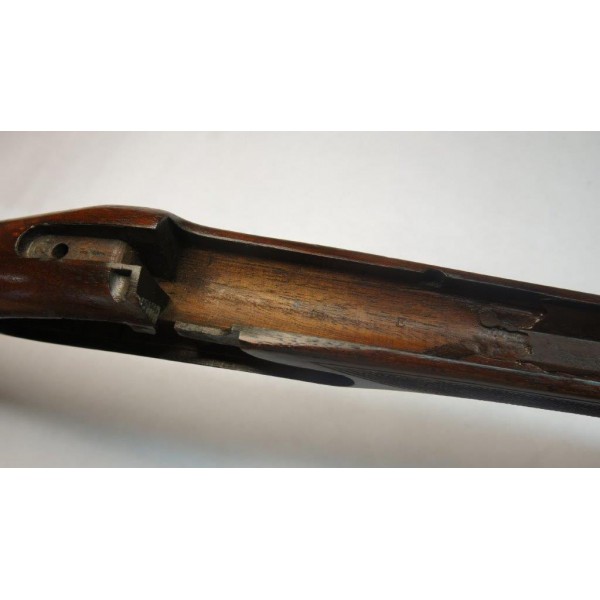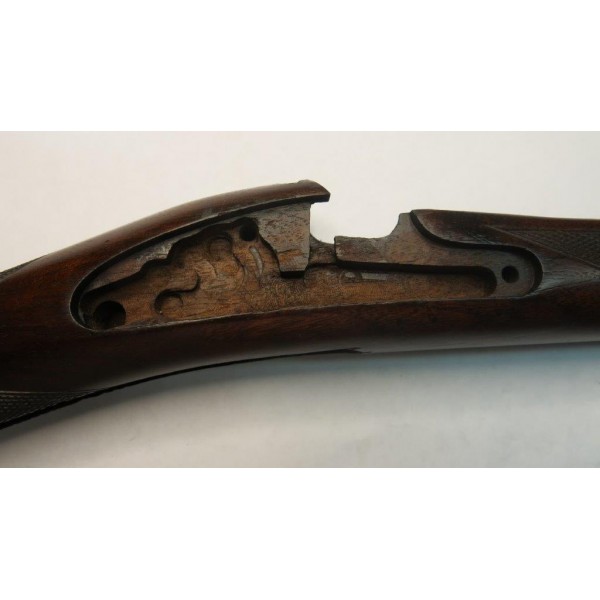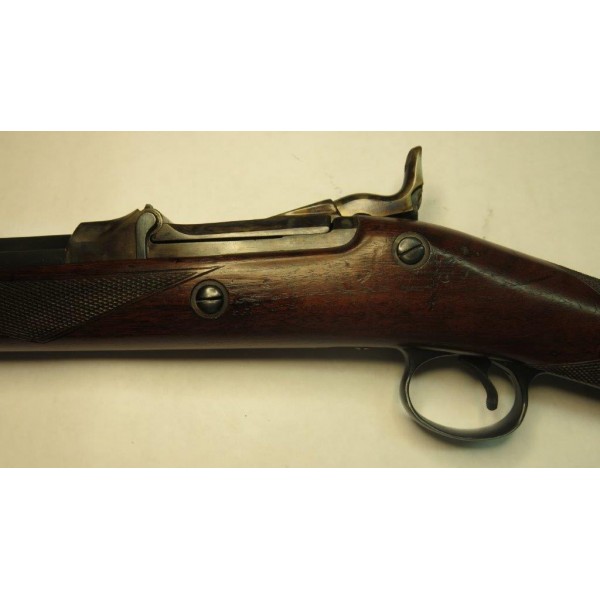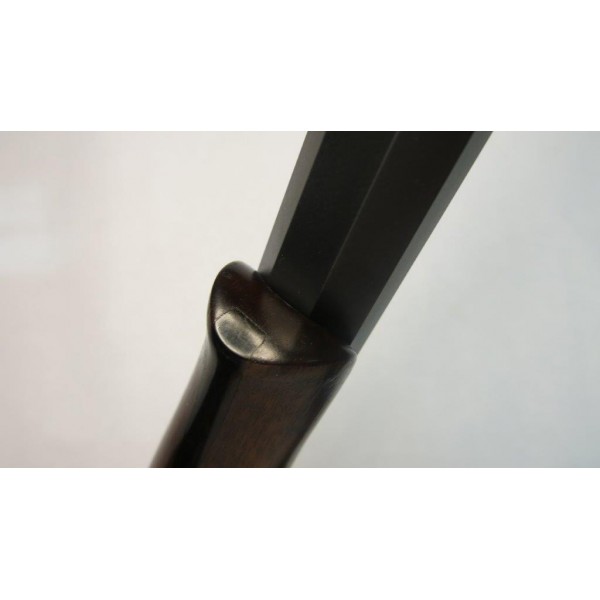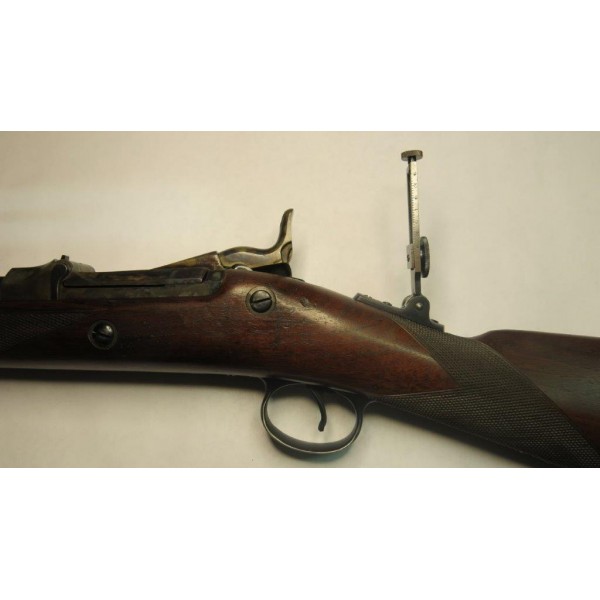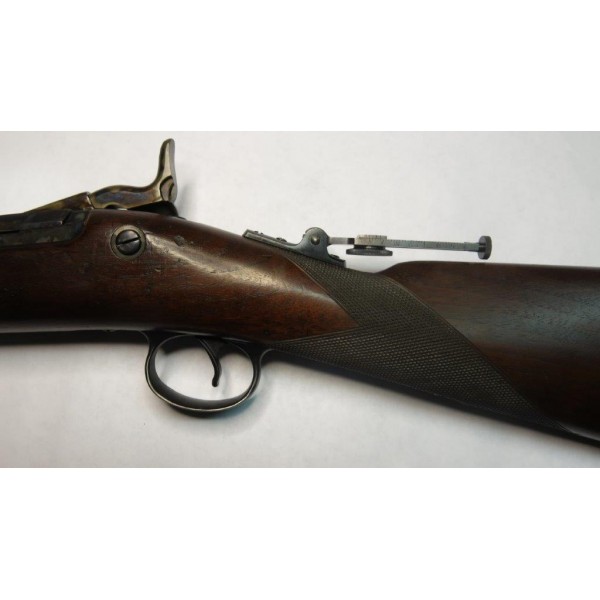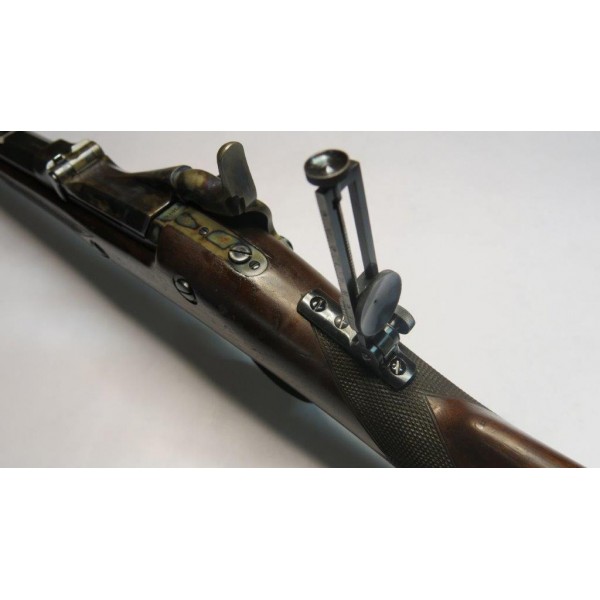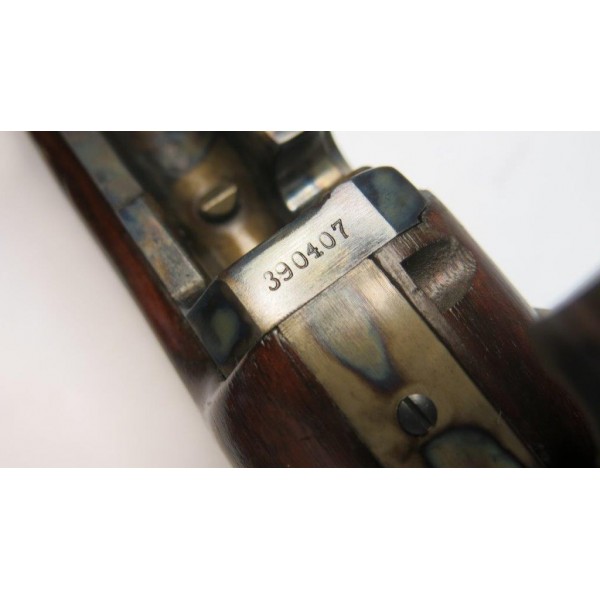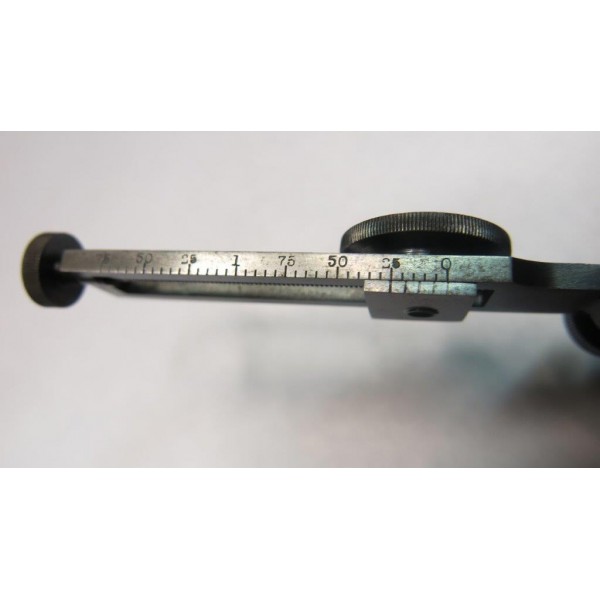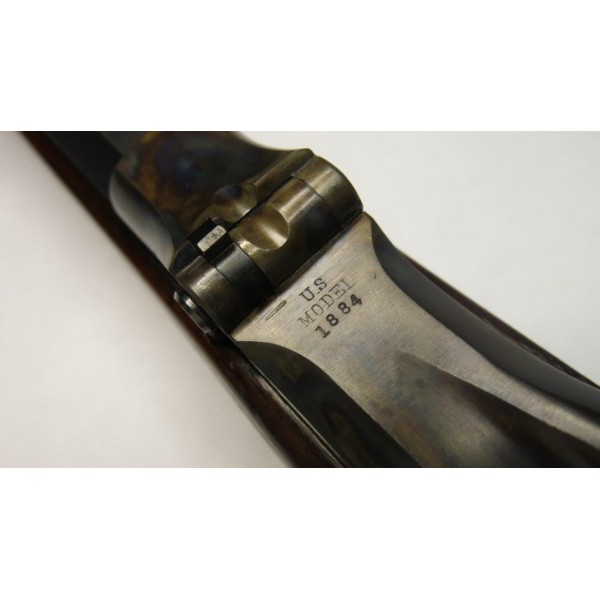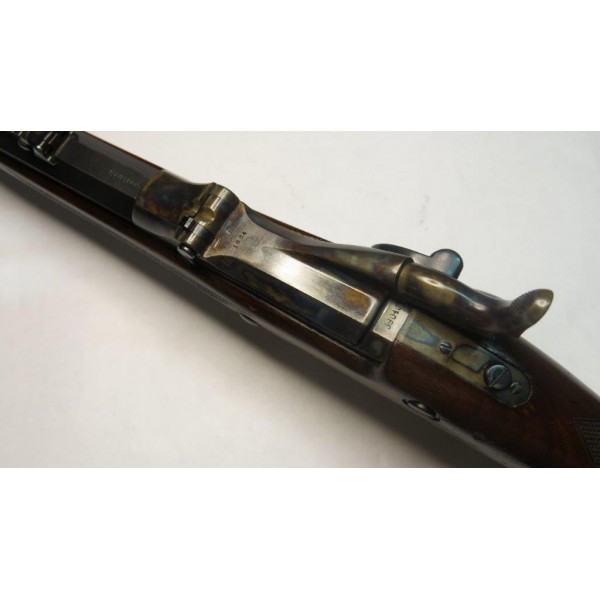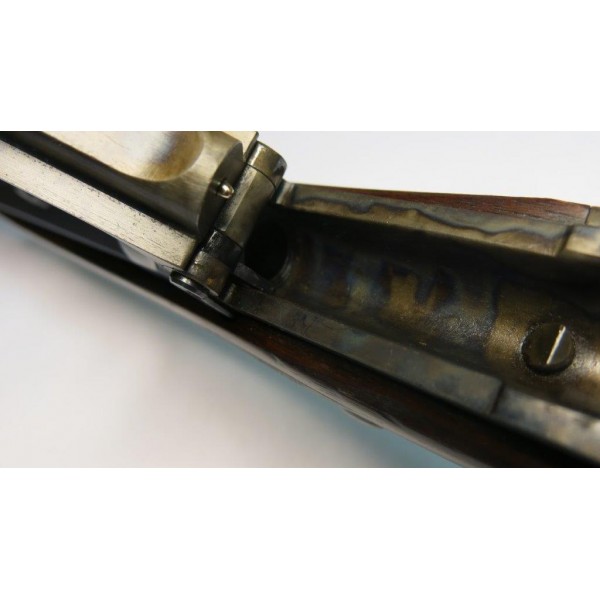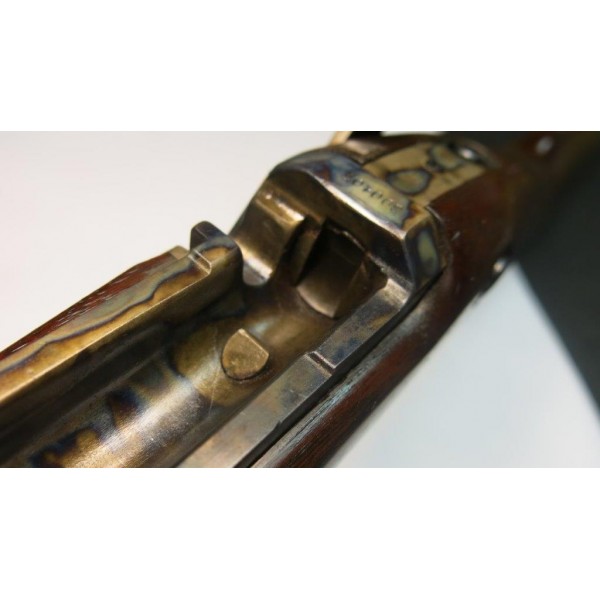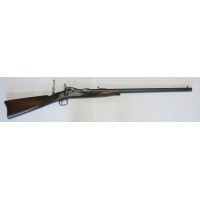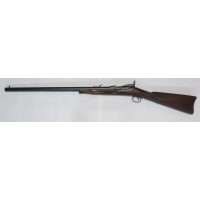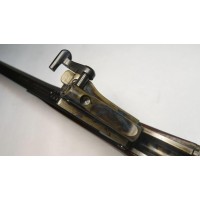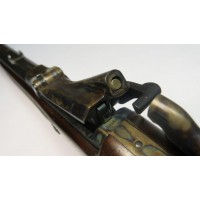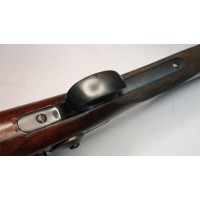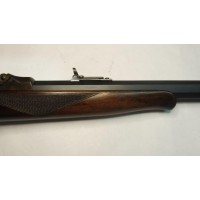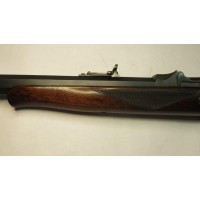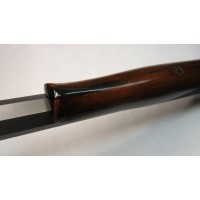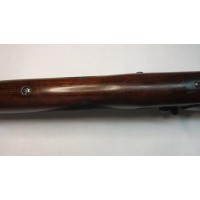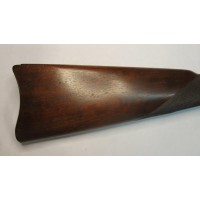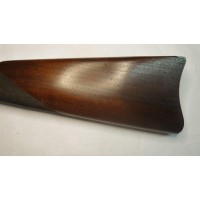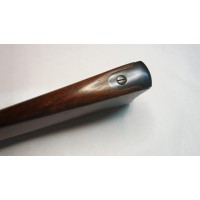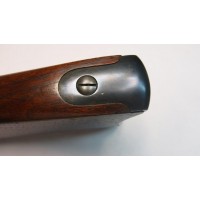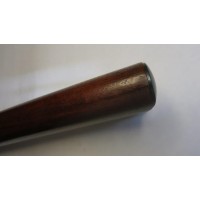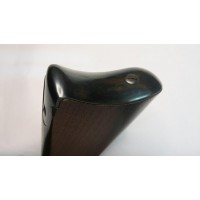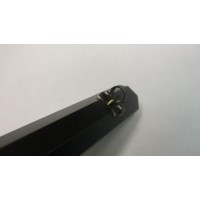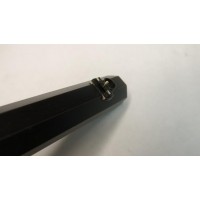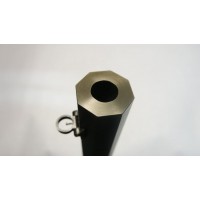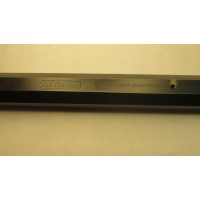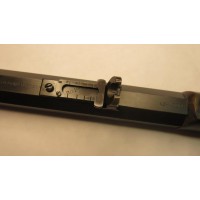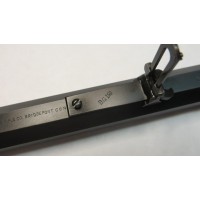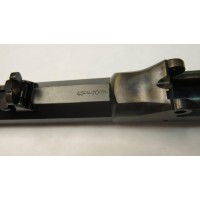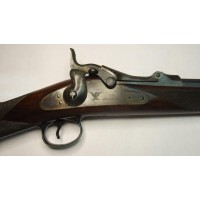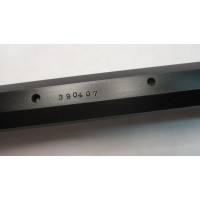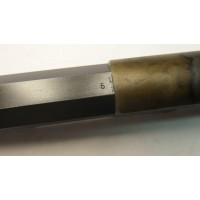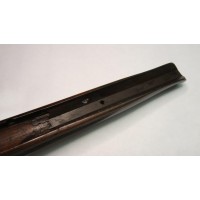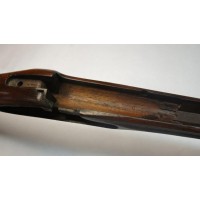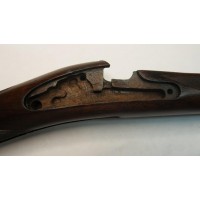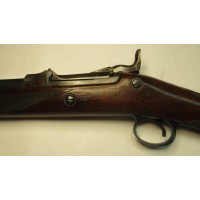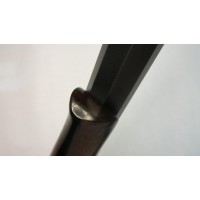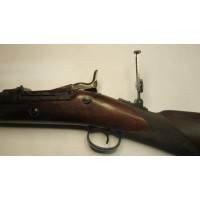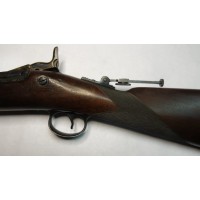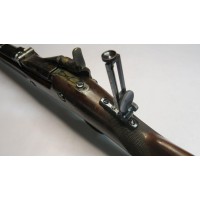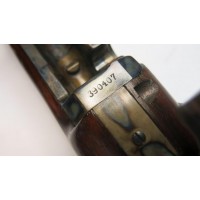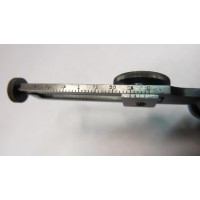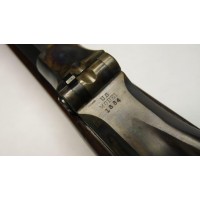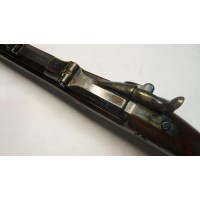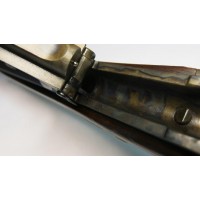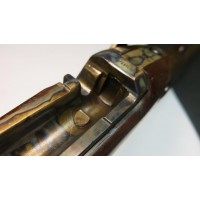Springfield Armory Trapdoor / Sharps Sporting Rifle
Springfield Armory Trapdoor / Sharps Sporting rifle
Serial number 390407
.45-70
This rifle is an example of the work that was done by talented and inventive gunsmiths in the late 19th and early 20th century. Utilizing retired military parts and combining them with commercial parts there were many affordable rifles built for utility purposes such as buffalo hunting. The collecting community commonly refer to this style of rifle as a Meacham or Whitney conversion or just “Buffalo Rifle”. Some of the companies that made and/or sold these rifles were E.C. Meacham of St. Louis, Freund Brothers of Denver and Cheyenne, Hartley & Graham of New York, Whitney Arms Co. of New Haven, N. Curry & Brother of San Francisco, John Lovell of Boston and Cheyenne and Gove of Denver.
The general overall condition of this rifle is close to new. The action parts show vivid color case hardening and the barrel, sights, butt plate and trigger guard are blued. The stock is in excellent condition and shows very few nicks, dents and dings expected for its age. The checkering is still sharp and shows little if any wear. The breech block lockup is solid with no lateral movement. During cleaning and inspection there was enough dried oil and grease found to suggest it had not been apart for a long time. Its condition can be attributed to the fact that it was built after the great Buffalo hunts ceased and was never put into hard use.
During a search to determine who made this rifle and when, seven similar rifles were located that are also built on Springfield actions. After comparing this rifle with them, it is evident that they were built by the same people. The stocks all show the same checkering pattern and schnabel forend profile. They all have octagonal barrels with the same Bridgeport Gun Implement Co. buckhorn rear sight. The seven have serial numbers of 1395, 2480, 4177, 8235, 19521, 20521 and 36671. In 1879 an order was placed by the Ordnance Department to turn in all Springfield’s with serial numbers below 50,000. This could explain the available parts used on the seven examples and they could have been produced by Whitney Arms Company for Hartley and Graham. Whitney went out of business in 1888. This rifle was built with parts that became available during or after 1888. As explained below, government records suggest the parent rifles receiver may not have left government service until late 1899. More research will be needed to determine who made this rifle and when.
There are features of this rifle that help to narrow down a time when it was built and what parts were used. A significant one is the Springfield receiver that has the serial number of 390407. It was produced in the first quarter of 1888 and was used on a U.S. Springfield Model 1884 rifle. This serial number is listed in Volume 2 of Franklin Mallory’s “Springfield Research Service” books on page 42. The rifle was issued in 1898 to Company I of the First California Volunteer Infantry. The First California mustered into service on May 7, 1898 in San Francisco California and saw service in the Spanish American War and part of the Philippine American War. They left the U.S. on May 26, 1898. They left the Philippines on July 26, 1899. They mustered out on September 21, 1899. At that time the U.S. Krag rifle was fully in service and a trapdoor would not have been reissued to a U.S. military unit. It may have been issued or sold to a state militia, correctional facility, school, firearms manufacturer, parts distributor, etc.
The Sharps Rifle Company went out of business in October of 1881 and their inventory of rifles and parts were purchased by various companies as the ones mentioned above. This rifles 26 9/16” Sharps octagonal barrel is marked on top with Old Reliable in a box with clipped corners and the Sharps Company address of SHARPS RIFLE CO. BRIDGEPORT CONN. The last N and period of the address are covered by the rear sight. Just forward of the receiver on top is marked 45CAL.70GRS. The muzzle had a rebated crown that was causing accuracy problems. The muzzle has been recut flat and 90 degrees to the bore leaving a sharp rifling edge. The bottom of the barrel was tapped for the forend screw 5” from the receiver. Just rear of the screw hole is the serial number 390407. 2 5/8” from the receiver is a threaded offset screw hole with no known purpose. The bottom of the barrel at the receiver is marked with a 5 and 1 over 2. This marking is the Sharps method of showing the weight of the barrel as 5 1/2 pounds. The width across the flats at the receiver is 1.025”, mid-point .985” and at the muzzle .925”. The bore has 6 lands and grooves with a 22” right hand twist. Forward of the chamber the bore diameter is .4523” and the groove is .4584”. At the muzzle the bore diameter is .4508” and the groove is .4564”. The bore diameter tapers .0075” and the groove diameter tapers .0100”. The rifling depth is .0030” forward of the chamber and .0028” at the muzzle. The lead is .150” long and .4610” in diameter and tapers down .0026” where it starts to transition to the rifling. The lead transitions to full rifling depth of .003” in .250”. The chamber and bore are in new condition. The receiver to barrel reference marks on the right side are in perfect alignment. The head space is perfect.
The rear sight is marked with B.G.I. CO for Bridgeport Gun Implement Company and is a classic buckhorn with an elevation leaf graduated out to 800 yards. This sight was used by the Bridgeport neighbor Sharps and is often called the Sharps Buckhorn. The front sight is of the Beech style with the flip up pin and post in a ring that will fold down forward for use with the ivory or bone bead. The sight radius is 22 1/4”.
Recently a sporting or schutzen height vernier tang sight has been installed on the stock rear of the breech screw tang. It is of an unknown manufacture. The staff is marked on the left side with 0 and upwards to 25, 50, 75, 1, 25, 50 and 75. There are 5 graduations between each of the above. The graduations are based on the inch. The eyecup base is marked with a vernier scale on its left side of 5 lines. The staff’s cam has been modified with detent notches for the vertical sighting position as well as a forward and rearward stop position. The sight radius is 32 7/8”. The buckhorn sight can be used at any distance with the tang sights staff removed or folded down to the rear. The buckhorn sight needs to be removed when using the tang sight at short distances. The buckhorns windage setting will not be disturbed unless the sights cradle has been disturbed.
The stock is a standard Springfield Model 1884 with the short wrist and long comb. It was cut forward of the rear barrel band spring and the slot for the spring was filled with a strip of walnut that is barely noticeable. A schnabel forend was fashioned and an ebony or buffalo horn inlay hides the cleaning rod channel. There is no visible inspector’s cartouche on the left wrist. There is noticeable recontouring of the stock in the wrist area. There is fine 18 lines per inch checkering on the forend and wrist that is well done. A ferruled hole for the forend screw was added 4 11/16” from the forend tip. The stock has a cleaning rod channel clean out hole under the front of the trigger plate that came into use about serial number 100,300 in late 1878. The top butt plate screw hole will only accept a short butt plate screw meant for use on the M1888 stock that has a storage compartment in the butt. The butt of this stock is solid and not cut for storage. The forward 7” of the forend barrel channel is set to the octagonal barrel with an epoxy like substance.
The receiver is a standard Springfield Armory Model 1884. The tang of the breech screw has been drilled and tapped for a tang sight and screw blanks have been installed. The holes are spaced 1.10” center to center and are threaded #8-40. There is some mild pitting to the underside of the receiver below the stock line that was there before the receiver was re-case hardened.
The breech block is a standard Springfield Armory Model 1884 and is marked with U.S over MODEL over 1884. The date of 1884 is more heavily struck than the U.S and MODEL. The cam latch is the last variant used by Springfield and was used after serial number 360,000 (mid-1887) where the cams shaft is visible in the thumb latch lever and not ground smooth. The firing pin is the sixth type made from aluminum bronze and was put into use about serial number 370,000.
The lock mechanism is a standard Springfield Armory Model 1888 and is marked with the Eagle motif and U.S. over SPRINGFIELD. It has a three-notch tumbler. The word Springfield is 1.0” long and 0.11” tall. The eagle is 0.440” high with a wing span of 0.810”. The shield is 0.190” high. This is the fourth style lock plate used by Springfield and was used after serial number 490,000 till the end of production. It was only used on the M1888 Round Rod Bayonet rifles and Cadets. The hammer has a relief cut on its back left that is most likely for clearance to a tang sight.
The trigger guard is a re-worked one-piece Springfield Model 1888 that came into use in mid-1890 at about serial number 495,000. It was only used on the M1888 RRB rifle and Cadet. The trigger was originally rivetted in place but is now affixed with a pin. The sling swivel and its boss forward of the bow has been removed. The bows profile has been narrowed and re-contoured.
The butt plate is a standard Springfield and is not marked in any way. It is the second type plate used on Springfield trapdoors and was used after serial number 78,000 or about July of 1877. These plates were salvaged from Model 55, 61, 63 and 64s.
Various markings
A bottom of receiver 1 11/16” from the rear
T breech screw
U sear spring
O main spring hook end
Z sear
1 tumbler
M, 2 bridle
E, B stock receiver cradle
4-point star & 2 unidentified marks, stock rear
Overall length 45 7/8”
Stock length 28”
Weight 9 lb. 10 oz.

